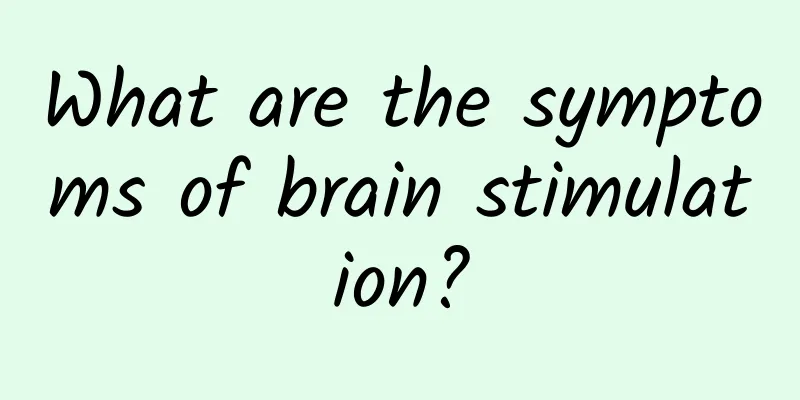The difference between indigestion and indigestion

|
Food accumulation refers to a disease in traditional Chinese medicine, which mainly refers to gastrointestinal diseases caused by children consuming too much milk and food, damaging the spleen and stomach, and causing the milk and food to stagnate in the middle burner. The disease of indigestion often occurs in infants and young children, and its main manifestations are abdominal distension, dry or sour stool, foul-smelling flatulence, sour and rancid belching, and abdominal distension and heat. Dyspepsia is a clinical syndrome caused by gastric motility disorders, which also includes gastroparesis and esophageal reflux disease. However, we often confuse them in life, so let us understand the specific differences between indigestion and indigestion! 1. Food accumulation Food accumulation is a disease in traditional Chinese medicine. It refers to a gastrointestinal disease caused by excessive consumption of milk and food in children, which damages the spleen and stomach and causes the milk and food to stagnate in the middle burner. Food accumulation often occurs in infants and young children. 2. Main manifestations Abdominal distension, dry or sour stool, foul-smelling flatulence, sour and rotten belching, abdominal distension and heat. Long-term food accumulation will cause malnutrition in children and affect growth and development. The prescription is Zhishi Daozhi Pills with modifications, and the medicinal ingredients are Zhishi, Rhubarb, Scutellaria, Coptis, Poria, Shenqu, etc. The specific medication must be used under the guidance of local traditional Chinese medicine practitioners. 3. Guidance: ⑴ Sugar-fried hawthorn Function: Clears the lungs and helps digestion. Especially for treating indigestion caused by eating too much meat. Method: Take an appropriate amount of brown sugar (if the baby has fever symptoms, you can use white sugar or rock sugar instead), put it into the pot and stir-fry it over low heat (to prevent burning, you can add a small amount of water), add an appropriate amount of pitted hawthorn, and stir-fry for another 5-6 minutes until you smell the sweet and sour taste. Let the child eat a little after each meal. ⑵ Yam Rice Porridge Function: Regulates the spleen and stomach, nourishes yin and fluid. It is used for children with indigestion, poor appetite, weight loss, and sallow complexion and thin body. Method: Take 100 grams of dried yam slices, 100 grams of rice or millet (corn), and an appropriate amount of sugar. Wash the rice, grind it together with the yam slices, put it into a pot, add an appropriate amount of water, and cook it into porridge. 2. Indigestion Clinical symptoms and diagnosis 1. Upper abdominal pain Upper abdominal pain is a common symptom. Some patients have upper abdominal pain as the main symptom, with or without other upper abdominal symptoms. Upper abdominal pain is often irregular. In some patients, upper abdominal pain is related to eating, manifesting as fullness pain that is relieved after eating, or as persistent abdominal pain between 0.5-3.0 hours after a meal. 2. Early satiety, bloating, and belching Early satiety and abdominal distension occur at a certain point, with or without abdominal pain. Early satiety refers to a feeling of fullness soon after eating, which leads to a significant reduction in food intake. Upper abdominal distension often occurs after meals, or persists and worsens after meals. Early fullness and epigastric distension are frequent with belching. 3. Symptoms of functional dyspepsia Many patients also have mental symptoms such as insomnia, anxiety, depression, headache, and inattention. These symptoms are related to cancer fear in some patients. (1) Ulcer-like dyspepsia type, which is characterized by symptoms of peptic ulcer without the presence of ulcer. Recent studies have found that patients who are often faced with stress may have a stress reaction, with intermittent increase in gastric acid excretion. In addition, motility disorders prolong and increase the damage of gastric acid to the mucosa. Therefore, patients with this type may improve by eating or taking H-receptor antagonists. (2) Dysmotility-like dyspepsia type, which is characterized by clinical manifestations of gastric retention symptoms. Patients have difficult-to-localize upper abdominal pain or discomfort, which is often caused by eating or aggravated after meals. At the same time, they also have upper abdominal distension after meals, early satiety, nausea or vomiting, and poor appetite. (3) Specific dyspepsia type: patients with FD symptoms but not meeting the above two groups of characteristic dyspepsia. Organic dyspepsia: After examination, it can be clearly determined that the indigestion symptoms are caused by a certain organ disease, such as liver disease, bile duct disease, pancreatic disease, diabetes, etc. For these patients, treatment is mainly targeted at the cause, with auxiliary supplementation of digestive enzymes or improvement of gastric motility to relieve indigestion symptoms. (4) Organic dyspepsia: After examination, it can be clearly determined that the dyspepsia symptoms are caused by a disease in a certain organ, such as liver disease, bile duct disease, pancreatic disease, diabetes, etc. For these patients, treatment is mainly aimed at the cause, supplementing digestive enzymes or improving gastric motility to relieve indigestion symptoms. |
<<: Can I drink coffee when I'm pregnant?
Recommend
What Chinese medicine can cure dizziness?
Dizziness is a relatively common symptom. There a...
Can I take Sanjin tablets during breastfeeding?
Sanjin Tablets are a common therapeutic drug that...
Small red bumps on the body
Small red bumps on the body are one of the common...
Don’t be afraid of hemorrhoids during pregnancy, these six fruits can “save your life”
Pregnant women can only eat a limited amount of f...
What to do if your baby has swollen tonsils
It is a very troublesome thing when children are ...
How to deal with a cracked finger
In autumn and winter, the weather is relatively d...
Feeling hot in the morning
Morning is the most important time of the day. If...
Effects and functions of Renzhonghuang
Many people are familiar with the name Ren Zhong ...
How to treat swollen lips due to allergies
Sometimes, when we find that our lips are red and...
The effect of boiling coriander water with honey
In life, many people like to eat coriander. Every...
What are the specific differences between fish oil and cod liver oil?
Fish oil and cod liver oil are both nutritional s...
Infusion rate for children
If you are sick and want to recover quickly, you ...
What are the symptoms of tuberculosis?
Consumption, also known as deficiency, is mainly ...
How to drink Cassia seeds to lose weight most? This is the best time
Losing weight is a lifelong career for women and ...
What is the reason for bleeding after menstruation? How to prevent and control it?
Many women will bleed after menstruation. This mu...









